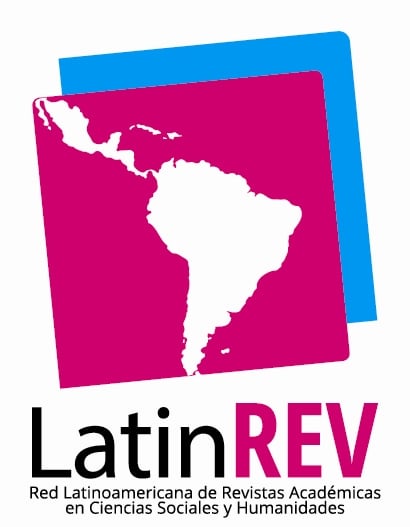Aspectos a considerar por los viticultores de Chihuahua en la nutrición de vid para vino
Aspects to consider by winegrowers of Chihuahua in the nutrition of wine grapevine
DOI:
https://doi.org/10.54167/tch.v6i2.677Palabras clave:
Vitis vinifera, contenido nutricional, muestreo foliar, fertilizaciónResumen
El cultivo de la vid (Vitis vinifera L.) es uno de los más antiguos en la historia del hombre. Se cree que esta planta es originaria de una zona situada entre el Mar Caspio y el Mar Negro. Los antiguos métodos de cultivo de la vid están siendo remplazados por técnicas más modernas que consisten principalmente en sistemas de riego y fertilización que permiten un cultivo más controlado. La nutrición y la fertilización de la vid tienen una importancia esencial en el cultivo moderno de la viña. Lograr buenos rendimientos y calidad del fruto depende en gran medida de la nutrición del cultivo. El requerimiento de nutrientes por los diferentes órganos de la planta durante cada periodo del ciclo de crecimiento, es muy importante para establecer programas de fertilización. Los análisis de suelo disponibles y comportamiento varietal a diferentes condiciones de nutrición permitirán poco a poco ajustar las recomendaciones. Así mismo, se sugiere la realización de análisis foliares para evaluar los niveles de suficiencia para las condiciones ambientales de cada cultivo. El presente escrito pone de manifiesto la importancia de la adecuada nutrición y fertilización del cultivo de la vid con el propósito de producir vinos de calidad en Chihuahua. Las recomendaciones formuladas deben ser tomadas como genéricas, hasta disponer de suficiente información para brindar recomendaciones definitivas, ya que las condiciones climáticas, varietales y de suelo son diferentes en las regiones donde se cultiva este frutal.
Abstract
The growing of grapevine (Vitis vinifera L.) is one of the oldest in human history. It is believed that this plant is native to an area between the Caspian and the Black Sea. Currently, the old methods of growing grapevines are being replaced by modern techniques that mainly consist of irrigation and fertilization systems which allow a more controlled cultivation. Nutrition and fertilization of grapevines are of essential importance in the modern farming of vineyards. The knowledge of the requirements of different plant organs during each growing cycle, in order to obtain good yields and fruit quality, depend heavily on crop nutrition. The available soil analysis and varietal behavior at different nutritional conditions allow slowly adjust the recommendations. Likewise, it is suggested the realization of foliar analysis for assessing the levels of sufficiency for the environmental conditions of each crop. This paper highlights the importance of adequate nutrition and fertilization regarding grapevine cultivation for producing quality wines in Chihuahua. Until having adequate information to provide definitive recommendations, the formulated suggestions should be considered as generic due to the climatic conditions and soil varieties are different in the regions where this fruit grows.
Keywords: Vitis vinifera, nutritional content, foliar sampling, fertilization.
Descargas
Citas
Bertamini, M. & N. Nedunchezhian. 2005. Grapevine Growth and Physiological Response to Iron Deficiency. Journal of Plant Nutrition 28(5): 737-749. https://doi.org/10.1081/PLN-200055522
Chen, L., B.R. Smith & L. Cheng. 2004. CO2 Assimilation, Photosynthetic Enzymes, and Carbohydrates of ‘Concord’ Grape Leaves in Response to Iron Supply. Journal of the American Society of Horticultural Science 129(5): 738-744. https://doi.org/10.21273/JASHS.129.5.0738
Conradie, W.J. 1991. Distribution and Translocation of Nitrogen Absorbed During Early Summer by Two-Year-Old Grapevines in Sand Culture. South African Journal of Enolology and Viticulture 42(3): 180-190. https://www.doi.org/10.5344/ajev.1991.42.3.180
Conradie, W.J. 2001a. Timing of Nitrogen Fertilization and the Effects of Poultry Manure on the Performance of Grapevines on Sandy Soils. I. Soil Analysis, Grape Yields and Vegetative Growth. South African Journal of Enology and Viticulture 22(2): 53-59. https://doi.org/10.21548/22-2-2192
Conradie, W.J. 2001b. Timing of Nitrogen Fertilization and the Effects of Poultry Manure on the Performance of Grapevines on Sandy Soils. II. Leaf Analysis, Juice Analysis and wine Quality.
South African Journal of Enology and Viticulture 22(2): 60-68. https://doi.org/10.21548/22-2-2193
Conradie, W.J. & P.A. Myburgh. 2000. Fertigation of Vitis vinifera L. cv. Bukettraube / 110 Richter on a Sandy Soil. South African Journal of Enology and Viticulture 21(1):40-47. https://doi.org/10.21548/21-1-2186
CROP TECH. 2002a. The Crop Tech «Sap Analysis» Test. https://crophealthlabs.com/shop/product/plant-sap-analysis/
CROP TECH. 2002b. Sap Sampling Grapes.
Delgado, R., P. Matín, M. del Álamo & M.R. González. 2004. Changes in the phenolic composition of grape berries during ripening in relation to vineyard nitrogen and potassium fertilization rates. Journal of Science of Food and Agriculture 84(7):623-630. https://doi.org/10.1002/jsfa.1685
García, M., P. Daverède, P. Gallego & M. Toumi. 1999. Effects of Various Potassium-Calcium Ratios on Cation Nutrition of Grape Grown Hydroponically. Journal of Plant Nutrition 22(3): 417-425. https://doi.org/10.1080/01904169909365639
García, M., P. Gallego, C. Daverède & H. Ibrahim. 2001. Effects of Three Rootstocks on Grape (Vitis vinifera L.) cv. Négrette, Grown Hydroponically. I. Potassium, Calcium and Magnesium Nutrition. South African Journal of Enology and Viticulture 22(2):101-103. https://doi.org/10.21548/22-2-2202
Keller, M., K.J. Arnink & G. Hrazdina. 1998. Interaction of Nitrogen Availability During Bloom and Light Intensity During Veraison. I. Effects in Grapevine Growth, Fruit Development, and Ripening. American Journal of Enology and Viticulture 49(3):333-340. https://www.doi.org/10.5344/ajev.1998.49.3.333
Keller, M., M. Kummer & M. Carmo. 2001a. Reproductive growth of grapevines in response to nitrogen supply and rootstock. Australian Journal of Grape and Wine Research 7(1):12-18. https://doi.org/10.1111/j.1755-0238.2001.tb00188.x
Keller, M., M. Kummer & M. Carmo. 2001b. Soil nitrogen utilization for growth and gas exchange by grapevines in response to nitrogen supply and rootstock. Australian Journal of Grape and Wine Research 7(1):2-11. https://doi.org/10.1111/j.1755-0238.2001.tb00187.x
Matín, P., R. Delgado, M.R. González & J. I. Gallegos. 2004. Colour of ‘Tempranillo’ Grapes as Affected by Different Nitrogen and Potassium Fertilization Rates. Acta Horticulturae 652: 153- 159. https://doi.org/10.17660/ActaHortic.2004.652.18
Poni, S., M. Quartieri & M. Tagliavini. 2003. Potassium nutrition of Cabernet Sauvignon grapevines (Vitis vinifera L.) as affected by shoot trimming. Plant and Soil 253:341-351. https://doi.org/10.1023/A:1024832113098
Reuter, D.J. & J.B. Robinson. 1997. Plant Analysis: An Interpretation Manual 2nd Edition. CSIRO Publishing. ISBN 8189741691, 9788189741693. www.doi.org/ 10.1071/9780643101265
Rodríguez-Lovelle, B., & J. Gaudillère. 2002. Carbon and nitrogen partitioning in either fruiting or non-fruiting grapevines: effects of nitrogen limitation before and after veraison. Australian Journal of Grape and Wine Research 8(2): 86-94. https://doi.org/10.1111/j.1755-0238.2002.tb00216.x
Sibler, A., G. Xu, I. Levkovitch, S. Soriano, A. Bilu & R.Wallach. 2003. High fertigation frequency: the effects of uptake of nutrients, water and plant growth. Plant and Soil 253(2): 467-477. https://doi.org/10.1023/A:1024857814743
Smolarz, K. & S. Mercik. 1997. Growth and Yield of Grape in Response to Long Term (since 1923) Different Mineral Fertilization. Acta Horticulturae 448: 427-432. https://doi.org/10.17660/ActaHortic.1997.448.79
Treeby, M.T., B.P. Holzapfel, G.J. Pickering & C.J. Friedrich. 2000. Vineyard Nitrogen Supply and Shiraz Grape and Wine Quality. Acta Horticulturae 512:77-92. https://doi.org/10.17660/ActaHortic.2000.512.8
Usha, K. & B. Singh. 2002. Effects of Macro and Micro-Nutrients Spray on Fruit Yield Quality of Grape (Vitis vinifera L.) cv. Perlette. Proceedings of the International Society on Foliar Nutrition, Acta Horticulturae 594:197-202. https://doi.org/10.17660/ActaHortic.2002.594.21
Volschenk, C.G., J.J. Hunter, D.J. le Roux & J.E. Watts. 1999. Effects of Graft Combination and Position of Application on Assimilation and Translocation of Zinc in Grapevines. Journal of Plant Nutrition 22(1):115-119. https://doi.org/10.1080/01904169909365611
Zerihun, A. & M.T. Treeby. 2002. Biomass distribution and nitrate assimilation in response to N supply for Vitis vinifera L. cv. Cabernet Sauvignon on five Vitis rootstock genotypes. Australian Journal of Grape and Wine Research 8(3):157-162. https://doi.org/10.1111/j.1755-0238.2002.tb00251.x
Publicado
Cómo citar
-
Resumen672
-
PDF320
-
HTML282

















